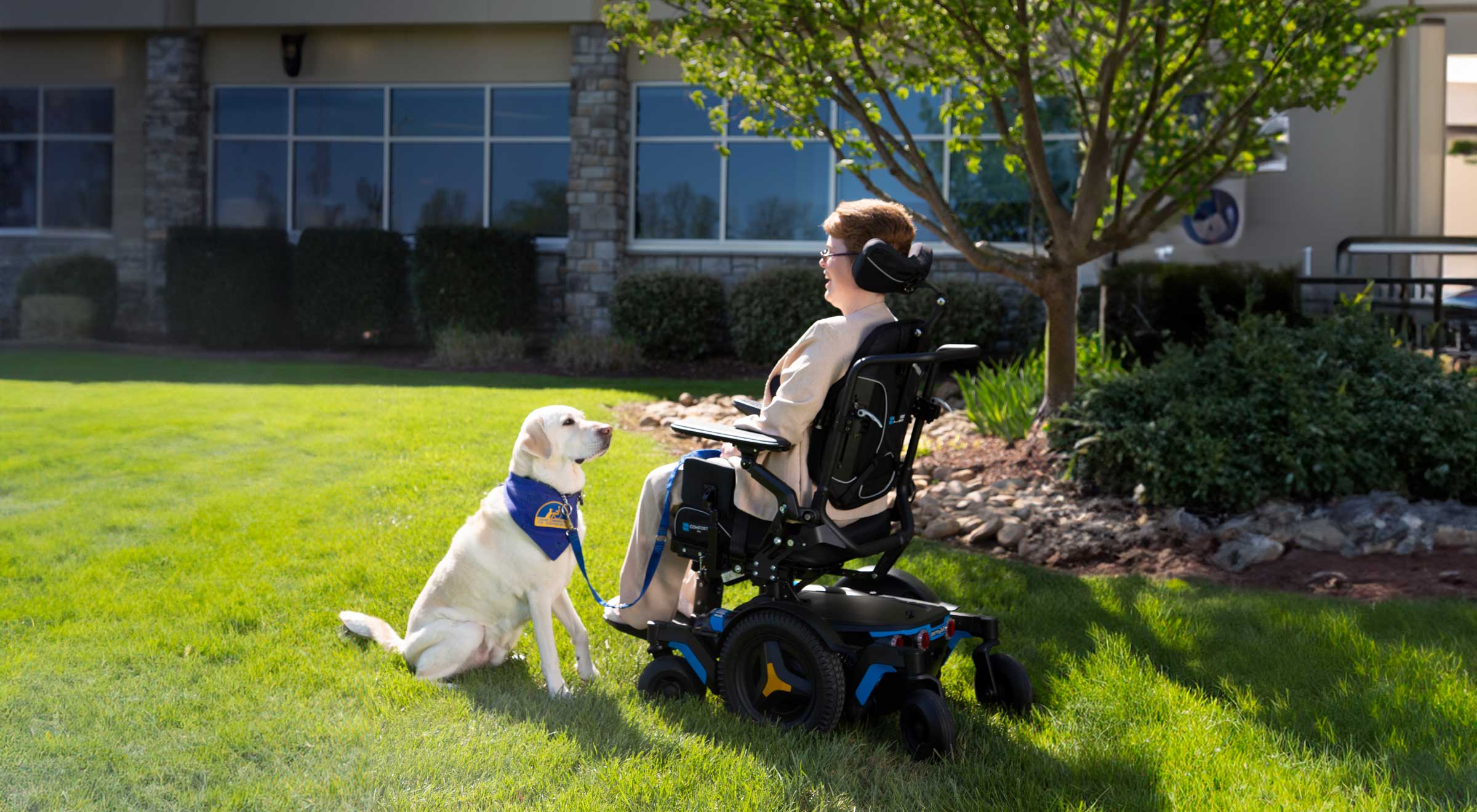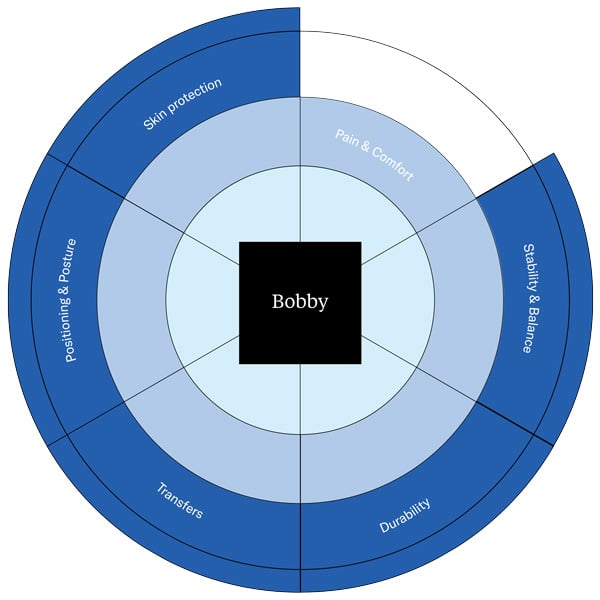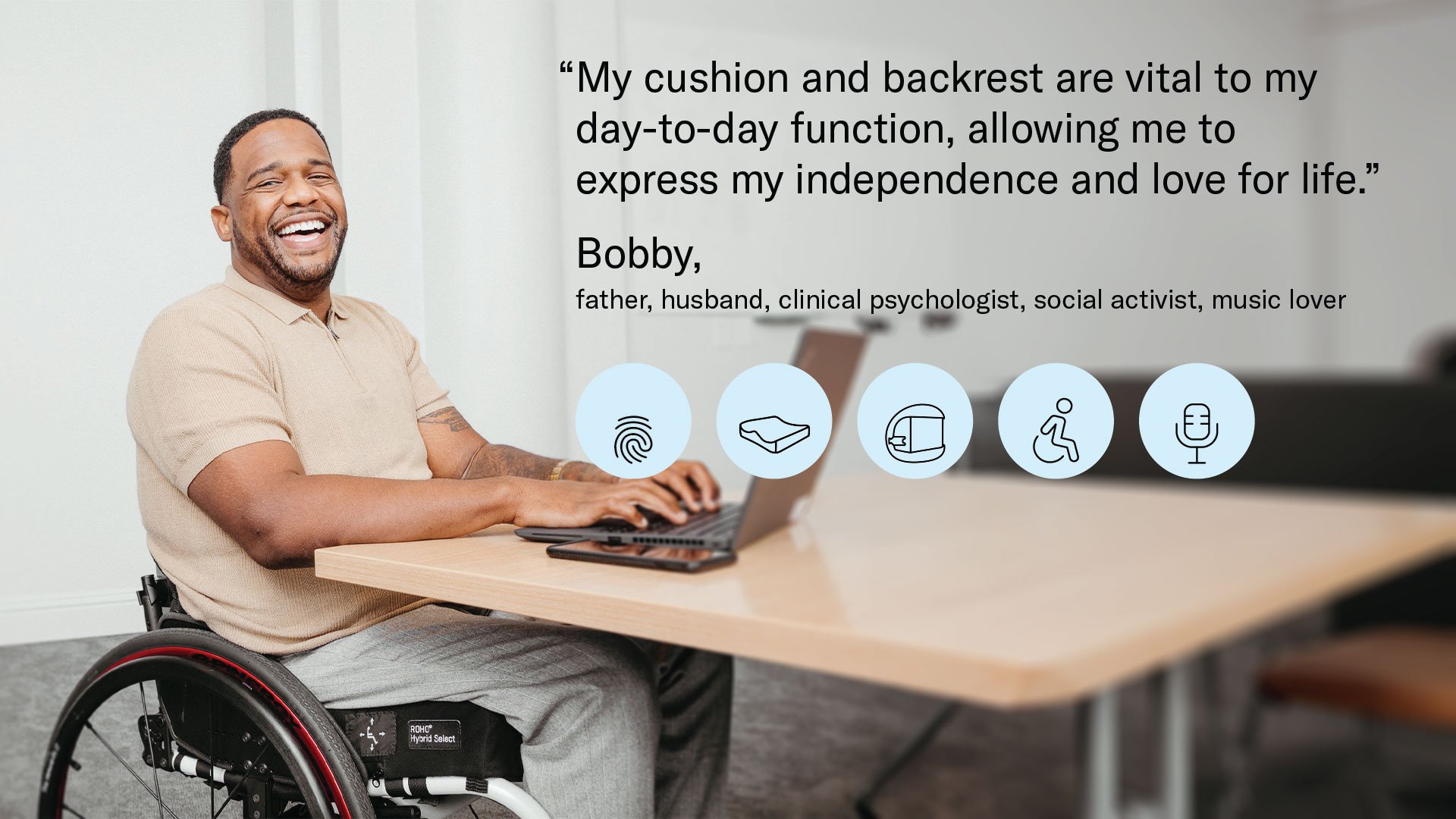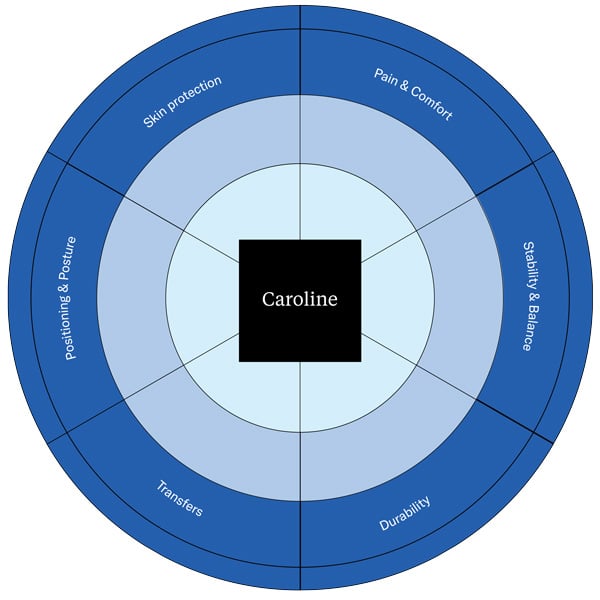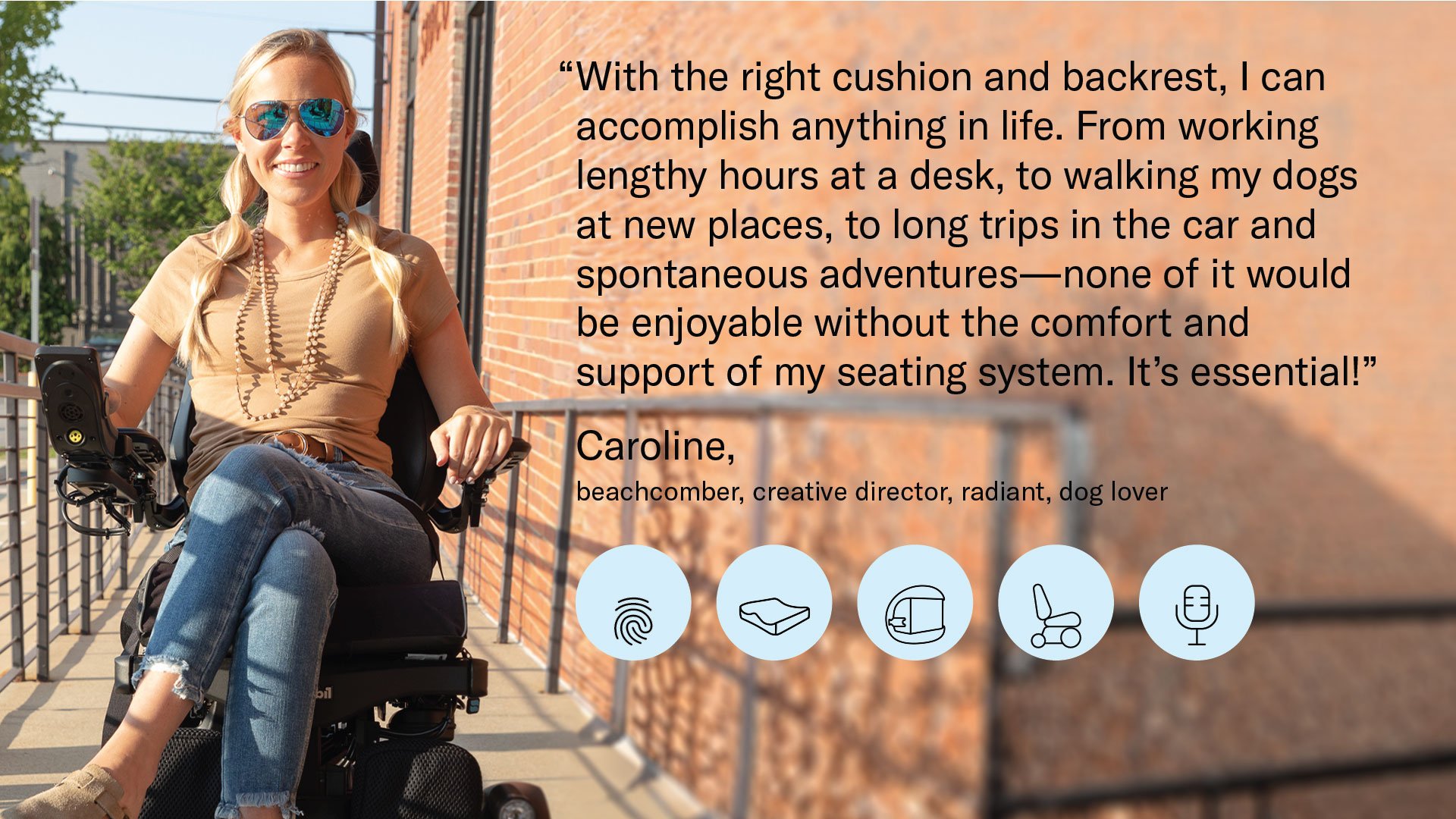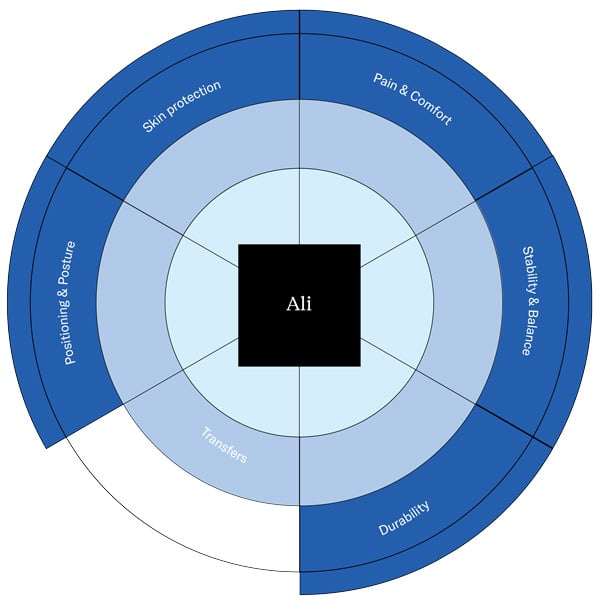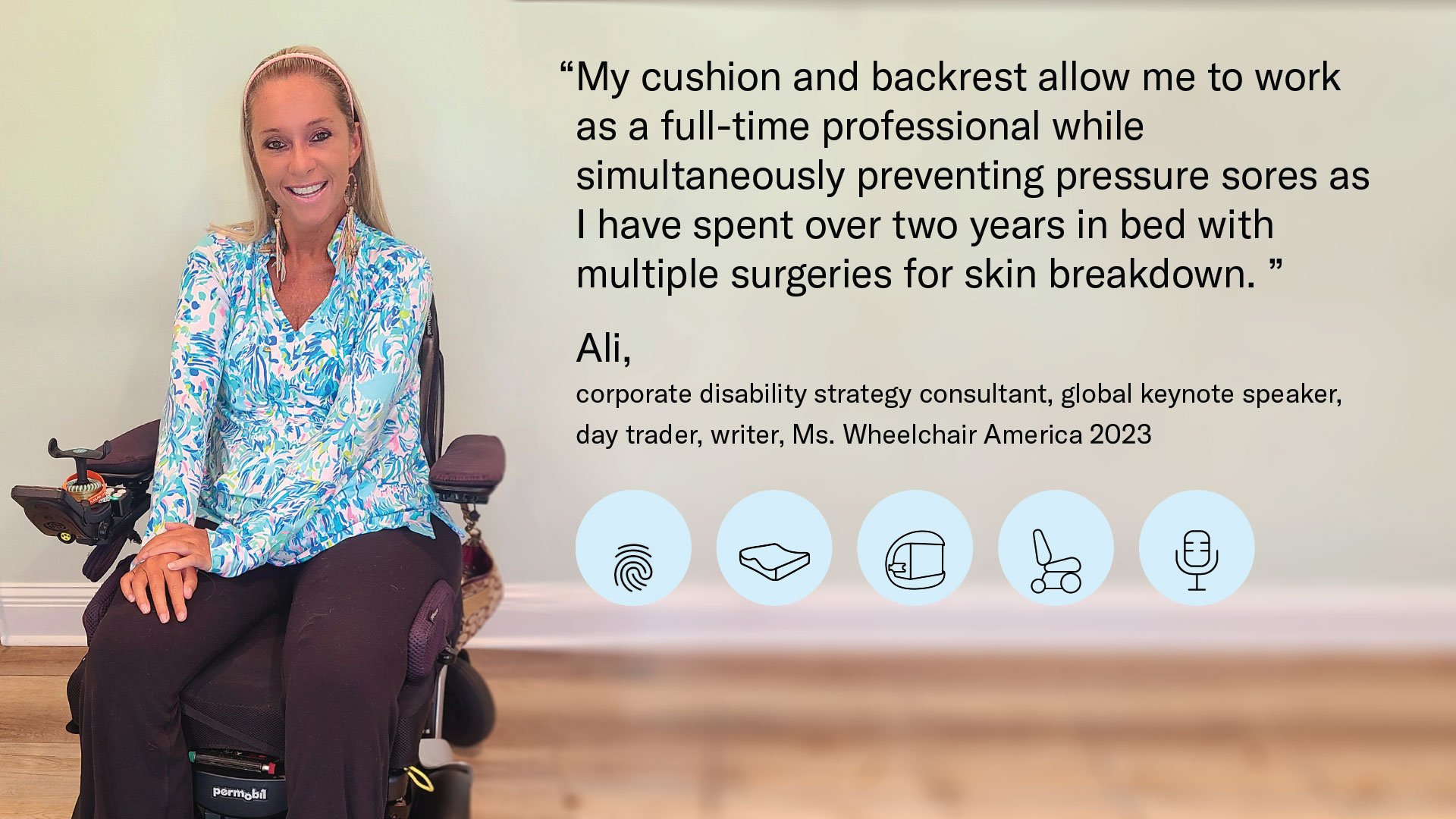Permobil Solutions for every Body
Seating and Positioning products are what support your body.
They provide skin protection, stability and comfort while using your mobility device. Finding the right cushion, back support and accessories does not have to be a challenge. Between ROHO® and Comfort seating and positioning products, we offer options for your specific needs.
ROHO®
Comfort Company
When selecting a seat cushion, back support or wheelchair, the Clinical Practice Guideline* recommends that the products:
- Minimize the pressure and shear exerted on the skin and soft tissue at high-risk areas
- Provide adequate support
- Maintain stability
- Maintains the individual’s full range of activities
*2019 Clinical Practice Guideline International Guideline
Cushions
![]() FACT: Cushions can be made of foam, air (flowing air or non-flowing air), or be a combination of these materials (hybrid foam/air or foam/gel).
FACT: Cushions can be made of foam, air (flowing air or non-flowing air), or be a combination of these materials (hybrid foam/air or foam/gel).
Foam
Not all foam is alike! Strategically layering different types of High Resiliency (HR) quality foam, Comfort cushions provide a stable base, have the ability to withstand compression over time and provide immersion for the individual’s body.
Air: Flowing
ROHO® offers a unique air cell design that allows air to flow between the cells providing pressure redistribution and stability. The concept of DRY FLOATATION(r) is the capability of the cushion to conform and adapt to the body’s shape, mimicking the pressure redistribution properties of water. ROHO cushions let you in, match your shape, move with you and work with you (not against you).
Air: Non-flowing
Vicair® technology uses tetrahedron shaped SmartCells that are filled with non-flowing air. Each Vicair cushion is filled with hundreds of these SmartCells that are virtually indestructible, require few adjustments, conform to the body's contours and provide pressure redistribution. Stability is achieved as the cells do not migrate from the cushion’s compartments, move with minimal friction, resemble viscous fluid, and allow the cushion to adapt to the body.
Hybrid: Foam + air and Foam + gel
Hybrid cushions are a combination of either foam and air or foam and gel. Typically, a High Resiliency (HR) foam base is used as the foundation, providing the shape and contours of the cushion. Then flowing air, non-flowing air or gel packs are placed in high risk areas for skin breakdown.
Custom Options
![]() FACT: Sometimes, all the cushion options that have been tried still don’t meet your individual needs. Custom fabricated seat cushions are also an option and Permobil offers the Inception cushion, ROHO custom and TruShape.
FACT: Sometimes, all the cushion options that have been tried still don’t meet your individual needs. Custom fabricated seat cushions are also an option and Permobil offers the Inception cushion, ROHO custom and TruShape.
Back Supports
![]() FACT: Back supports are typically made from a combination of durable and lightweight materials such as molded aluminum, foam, air cells, and breathable fabrics.
FACT: Back supports are typically made from a combination of durable and lightweight materials such as molded aluminum, foam, air cells, and breathable fabrics.
Adjustable to accommodate different body shapes and sizes, some back supports can also have head supports and lateral trunk supports attached to them. The goal of a back support should be to promote proper spinal alignment and reduce the risk of developing pressure injuries or discomfort while using a wheelchair.
Custom Options
![]() FACT: Standard back support solutions available may not align perfectly with your unique needs. Permobil presents a selection of custom backs including Comfort Designs, ROHO Custom, and TruShape to cater to your specific needs.
FACT: Standard back support solutions available may not align perfectly with your unique needs. Permobil presents a selection of custom backs including Comfort Designs, ROHO Custom, and TruShape to cater to your specific needs.
Seating & Positioning Accessories
![]() FACT: Head supports, lateral trunk supports, and arm and leg accessories, commonly referred to as wheelchair accessories, can play a crucial role in enhancing comfort, stability, and positioning.
FACT: Head supports, lateral trunk supports, and arm and leg accessories, commonly referred to as wheelchair accessories, can play a crucial role in enhancing comfort, stability, and positioning.
BodiLink® offers:
- Head supports that are compatible on virtually any power or manual wheelchair and offer a full range of adjustability and positioning.
- Lateral trunk supports are anatomically designed and have adjustable features and contours
- Lateral pelvic/thigh supports offer multiple configurations and adjustability for leg, hip and knee positioning.
We also offer residual limb/amputee supports, arm and foot care products and lap trays.
Permobil believes in the science and evidence that support our innovations. Transparency is necessary to gain your trust in our products when selecting individual seating and mobility solutions.
Finding your individual solution
Finding the right seating solution can be confusing, especially when you consider multiple factors such as your lifestyle, skin protection and positioning needs, and comfort.
How to read the individual thumbprint
What are your needs?
Stability & balance: based on the support you need to feel stable
Pain & comfort: based on your comfort needs
Durability: based on your experience & cushion medium
Positioning & posture: based on the your postural needs and ISO test data
Skin protection: based on your skin integrity needs and ISO test data
Transfers: based on experience & the cushion medium

-
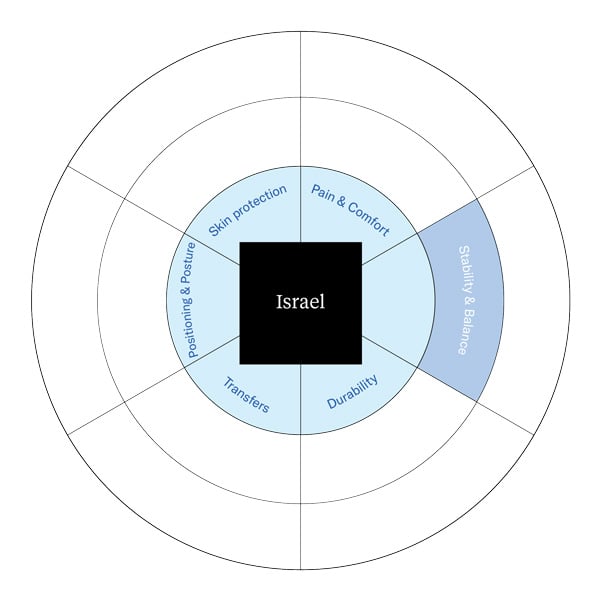 Israel's thumbprint
Israel's thumbprint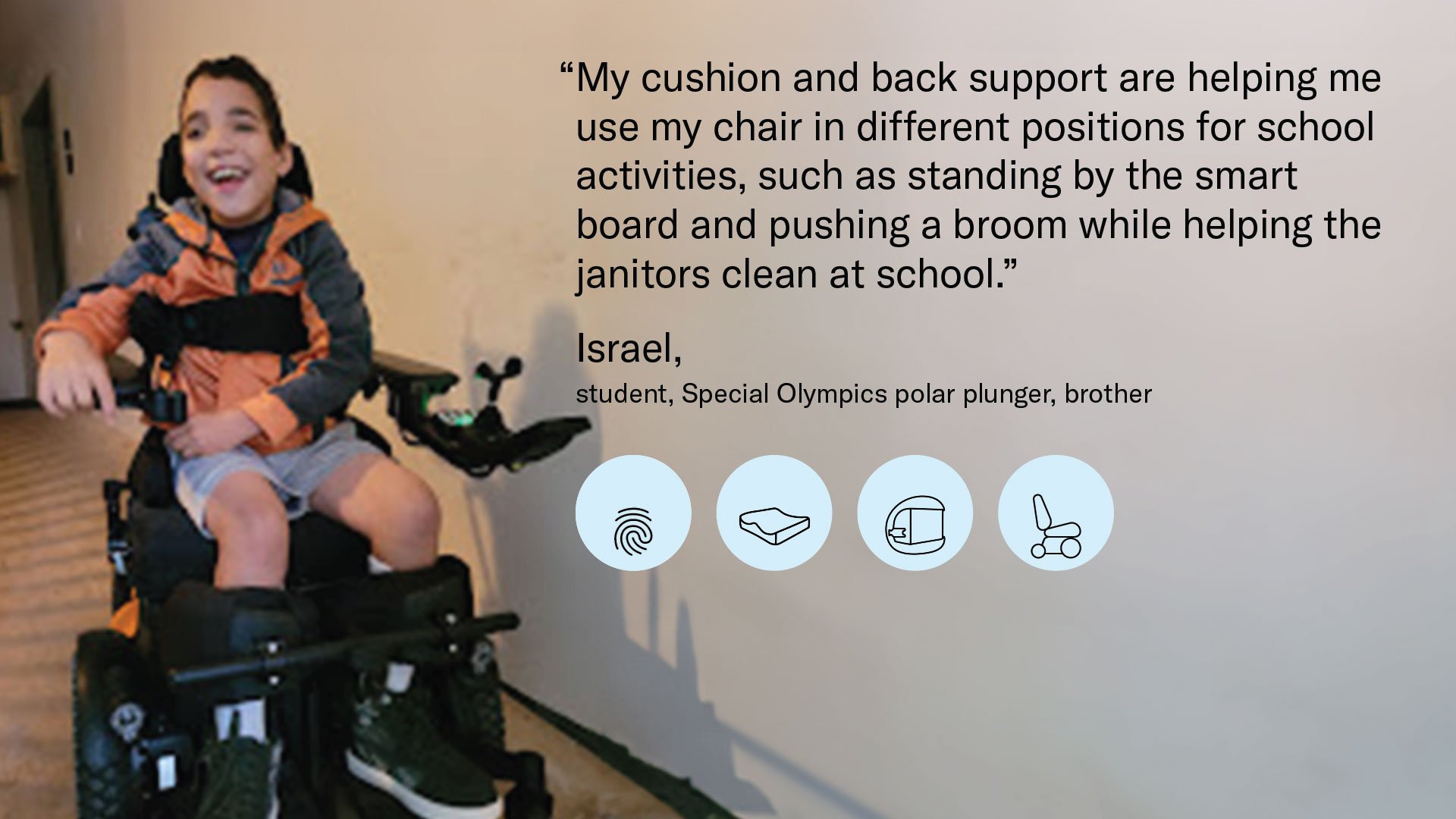

Adjustable Technology Insert (ATI)

The ATI, a moldable and remoldable high-strength, lightweight aluminum insert, offers on-site customization for off-the-shelf cushions. Designed to fit under a compatible cushion within its cover, it adapts to physical or functional changes, ensuring extra support where needed.


